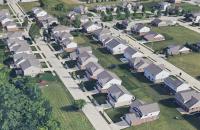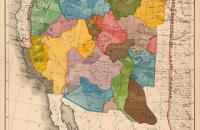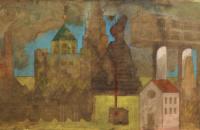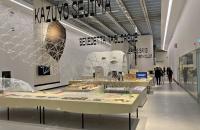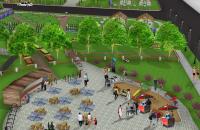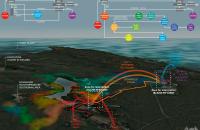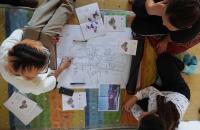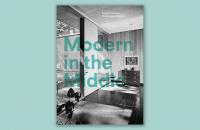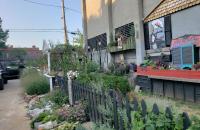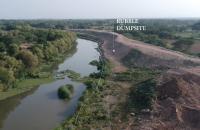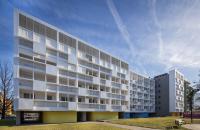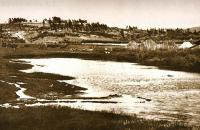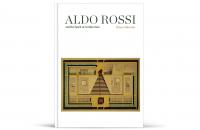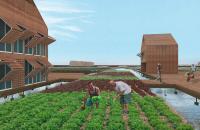Professor in Residence, Department of Architecture, GSD, Harvard University, Cambridge MA, USA
Urban Regeneration of Historic Italian Borghi after the Pandemic
VOLUME 7/2022 - Issue 1 , Pages: 197 - 216 published: 2022-06-07The advent of the pandemic has had a large impact on expectations about the way people live and work. The desire of many to live in situations of environmental health has stimulated proposals and actions aimed at revitalizing the life of Italian countryside villages (“borghi”). This article considers how architects and urban planners can help reverse the escape from borghi to cities, for a migration in the opposite direction, from cities to borghi. The analysis evaluates the opportunities given by smart working and distance learning, the forms of mobility such as the restoration of local railways and car-sharing policies, the restoration of abandoned buildings for new uses such as co-working spaces and “alberghi diffusi” (widespread hotels). Economic incentives to stimulate local agricultural products and artisan traditions are also considered. As an example, the article reports studies by the authors aimed at urban development interventions for historic villages based on the application of the “analog method,” that is design proposals inspired by the architectural qualities of existing borghi reinterpreted in forms and building technologies of a contemporary character.
Modern Architecture and Climate
VOLUME 6/2021 - Issue 1 , Pages: 265 - 270 published: 2021-05-07
Modern Architecture and Climate: Design before Air Conditioning
By Daniel A. Barber
Princeton University Press, 2020
8 in. x 10.5 in. [203 mm x 267 mm]
76 color + 196 b/w illustrations
336 pages
$60.00 / £50.00 (hardcover)
ISBN: 978-0-691-17003-9
(sub)URBAN Hybrid Housing: Rethinking the City with Healthy, Sustainable Housing
VOLUME 5/2020 - Issue 2 [HEALTHY URBANISM], Pages: 407 - 424 published: 2020-11-23City dwellers have historically fled to the countryside to escape disease but returned when it was safe. US cities have experienced growth for decades, but that trend is slowing and, in some cases, reversing. Increasingly, millennials are leaving cities for the suburbs to combat escalating housing costs and lack of family-friendly amenities, and the current pandemic has sped up that rate of exodus. Urban dwelling is a very sustainable lifestyle, so how can we provide healthier and more sustainable qualities of suburban living in the city to entice people to return and/or stay? This research/design project, proposed to fill large vacant blocks in cities, produced a (sub)Urban hybrid housing model that combines qualities of suburban housing with the benefits of urban dwelling. The resulting design, based on the Charleston house typology arranged in a checkerboard pattern, provides a south-facing side yard with access from most rooms to sunlight, fresh air, shade, photovoltaic panels and a private, green, social distancing space not found in the common urban row home typology.
Waving the Magic Wand: An Argument for Reorganizing the Aridlands around Watersheds
VOLUME 5/2020 - Issue 1 , Pages: 163 - 184 published: 2020-05-21Irrigation remains the primary means of sustaining urbanization and stabilizing agricultural productivity in arid America. In the contest for the West, water is both wealth and power. Today’s struggle to overturn water scarcity is traceable through a long history of legislation overseeing land regulation, property speculation, societal development, and cultural attitudes, real and perceived, inscribed within the America’s aridlands. In reality, there is no magic wand - no miraculous technology - that alone will fulfill the needs of all who have been promised abundance in the aridlands. This paper proposes that revisiting John Wesley Powell’s 1893 proposal for aridland development in the context of today’s ecological conditions catalyzes an alternative response to today’s predictions of changing climates, and can provide the basis of an approach to the aridlands which builds from the enmeshed relationship between social and environmental systems.
"Modern and Site Specific: The Architecture of Gino Valle 1945-2003"
VOLUME 4/2019 - Issue 1 , Pages: 223 - 226 published: 2019-07-16
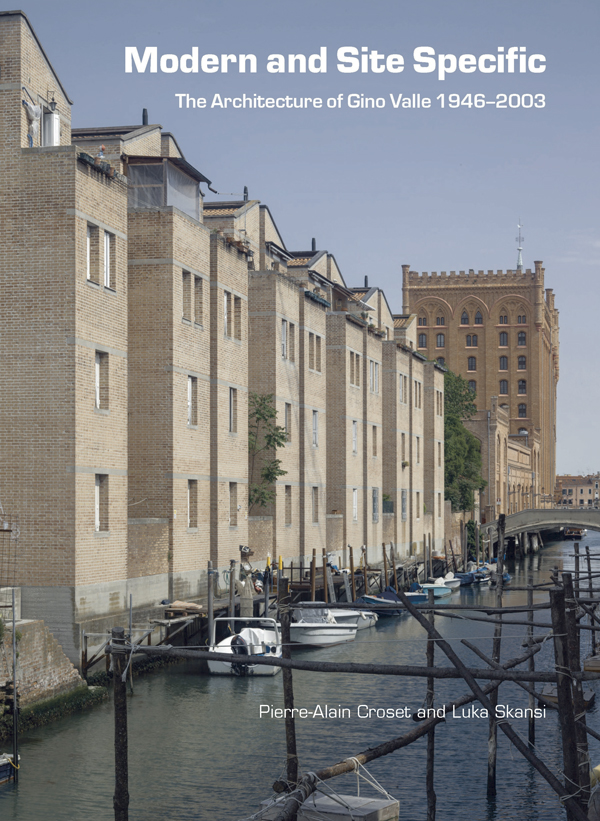
Modern and Site Specific:
The Architecture of Gino Valle 1945-2003
By Pierre-Alain Croset and Luka Skansi
London: Lund Humphries, 2018
250 × 190 mm
100 b/w and 150 color illustrations
352 pages
£50.00 GBP (hardcover)
ISBN: 978-1848222779
Three Aspects of Nostalgia: Thoughts on the Work of Aldo Rossi
VOLUME 8/2023 - Issue 1 , Pages: 153 - 175 published: 2023-07-12This essay discusses various aspects of the term “nostalgia.” Rather than an individual plight, it will be considered here as a symptom of contemporary society, which does not stand in contrast to modernity but is derived from it. Nostalgia characterizes humans’ connections to the past, to their sense of self, home and community. We reflect on how this affects our longing for home, how we envision our collective home, and how we place ourselves in the world. We distinguish three types of nostalgia: Restorative, longing for the restoration of a lost home; Utopian, transforming our longing into a utopian ideal; and Reflective, which differs by shifting the focus from recovering what is perceived as a loss of absolute truth to pondering questions of history and the passing of time. The essay focuses on nostalgia’s bearing on architecture, as demonstrated in the work of Architect Aldo Rossi. His oeuvre, in which the contemplation of time and memory are inherent, reveals all three forms of nostalgia, highlighting and questioning their centrality to architectural thought and practice.
Five Esthetics of the Global Development Industry: Building Low-Cost Housing in Rwanda
VOLUME 7/2022 - Issue 2 [The Right to Housing], Pages: 477 - 502 published: 2023-01-25This paper argued that, in parallel to financial feasibility, the esthetics play a powerful role in swaying the donation and investments away from low-cost housing projects in the development context. The paper analyzes the development industry’s structure and its players and asks how architects could ally with the End Users by understanding their self-building practices. The architect in the global development industry works with at least five clients. They are the Funders (often from the global North), the Local Government (often in the global South), the Architectural Disciplines in the funder nations, the Local Building Sector, and the End Users. Our survey of 370 self-build homes in Rwanda attests that not all actors represent their values equally, and the End Users, the actor with little resource and leverage, may be rendered silent in this process although they have the most at stake. While the global development industry tries to eradicate self-building activities, the End Users continue to claim the built environment by tapping into their social capital, and share labor, materials, and knowledge. Their architecture simultaneously protests and participates in development.
Stories of Women Architects Who Made Their Mark
VOLUME 7/2022 - Issue 1 , Pages: 219 - 230 published: 2022-07-06Healthy Inner-City Communities: Toward an Integrative Framework
VOLUME 5/2020 - Issue 2 [HEALTHY URBANISM], Pages: 425 - 446 published: 2021-01-26This paper addresses an important and timely question: How can disadvantaged communities of color become healthier? To address the question, we built on an interdisciplinary body of literature in public health and healthy community design to develop an integrative framework utilizing a variety of social capital. Community engagement and intermediaries played a critical role in constructing and facilitating the integrative framework that we applied across the study community. This study used a case study methodology reinforced by the relevant literature, participatory action research, interviews, surveys, and evaluations. The outcomes of the project suggest that the integrative framework that we built, which focuses on social capital, could provide an effective way to promote better health in disadvantaged communities. To make the framework more impactful, however, community engagement, partnerships with grassroots community organizations, a democratic design process, and the role of designers as facilitators are essential. The study’s outcomes may be useful in addressing some COVID-19 related challenges facing marginalized communities, such as lack of access to green and open space that could help residents build social capital and improve their health.
Landscape Lifecycles as a Speculative Design Research Practice for Transforming Waste Conditions
VOLUME 5/2020 - Issue 1 , Pages: 185 - 220 published: 2020-06-23Research-based design has been foundational for landscape architecture. Analytical layering in geographically-based mappings has become a universally applied, formulaic approach. For waste landscapes, this has generated similar redevelopment strategies for drastically differing waste landscape conditions. This site typology, however, requires more nuanced approaches. As a design-research framework, “landscape lifecycles” aims to tackle waste landscapes with integrative strategies and techniques that reactivate waste as a legible and dynamic contributor to local and regional contexts; a method for integrating multiple diverse programs rooted in economic, environmental, and social performance to form hybrid assemblages in the transformation of perceived material and spatial waste. This article highlights design-research and generative representational methods developed through projects and coursework that embrace speculation as a means of engaging with waste conditions at multiple scales — from the material to the region. These methods range from speculative geographic, process, and abstract mapping to scenario testing to time-based, projective design that document, explore, and test an argumentative hypothesis and the multi-scalar design implications of research on the imaginative potentials of waste transformation.
Architecture in Times of Rebuilding
VOLUME 8/2023 - Issue 1 , Pages: 179 - 184 published: 2023-06-15
Year Zero to Economic Miracle.
Hans Schwippert and Sep Ruf in Postwar West German Building Culture
By Lynnette Widder
With photographs by Thad Russell
Zurich: gta Verlag 2022
22 x 28 cm [9 x 11 in.]
170 illustrations
320 pages
€ 52 hardcover
ISBN: 9783856764272
Incremental Development Manual: Toward a Cooperative Model of Housing in Ulaanbaatar (Mongolia)
VOLUME 7/2022 - Issue 2 [The Right to Housing], Pages: 503 - 527 published: 2023-01-20The population of Ulaanbaatar, Mongolia, has increased by 197% in the last twenty years, resulting in the creation of sprawling districts with no basic infrastructure that house over 60% of the city’s population. Current development plans are proving ineffective as they require huge investments toward land-owner compensation and infrastructure, and rely on developers for implementation. As an alternative, we have developed a strategic framework for sustainable and affordable district upgrading for these sites as an Incremental Development Manual. The manual offers a strategy for in situ development that accommodates incremental growth and collective improvements to residents’ shared plots. It operates on a small scale, working on the mutual benefits of four households working together as the basic unit for all further transformation. This paper will demonstrate how this strategy reflects the diversity of housing needs and incomes of ger district inhabitants, and discusses potential financial tools for housing and infrastructure provision, including the potential for cooperative development.
Microalgae Building Enclosures: Design and Engineering Principles
VOLUME 7/2022 - Issue 1 , Pages: 231 - 235 published: 2022-07-06
Microalgae Building Enclosures: Design and Engineering Principles
By Kyoung Hee Kim
New York: Routledge, 2022
7 x 0.5 x 10 in.
188 color illustrations
254 pages
$39.95
March 29, 2022
ISBN: 9780367410452
Reframing Chicago’s Residential Architecture
VOLUME 6/2021 - Issue 1 , Pages: 271 - 276 published: 2021-05-07
Modern in the Middle: Chicago Houses 1929-1975
By Susan S. Benjamin and Michelangelo Sabatino
New York: The Monacelli Press, 2020
279 mm x 203 mm
325 illustrations
296 pages
$ 60 hardcover
September, 2020
ISBN: 978-1580935265
A Productive City in a Time of Pandemics: Healthy Food Access as Justice in Baltimore
VOLUME 5/2020 - Issue 2 [HEALTHY URBANISM], Pages: 447 - 472 published: 2021-01-12Inequity is the underlying cause of today’s major societal health dilemmas. The World Health Organization (WHO) defines social health as “the conditions in which people are born, grow, live, work and age.” The success of this sequence depends on the distribution of money, power, and resources. Food is central in everyone’s life: an extended commitment for an equitable access to healthy food is necessary--even more during times of isolation due to the COVID19 pandemic. Focus group studies with community residents are important in increasing public understanding and community engagement around food accessibility, prevention of “food deserts,” and associated health issues. Urban United Roots, an organization discussed in this paper, offers an overview on how Baltimore, Maryland is assisting access to healthy food both spatially (elimination of food desert) and socially (achievement of food equity). This Baltimore-group addresses healthy food options that impact every aspect of the quality of life through the Honey Badger Promenade project in Harlem Park.
Disaster Planning Across Scales: Lessons from Post-Earthquake Rubble Management in Oaxaca, Mexico
VOLUME 5/2020 - Issue 1 , Pages: 221 - 250 published: 2020-06-10This paper examines rubble management as an important but often neglected component of disaster response and a powerful example of the frequent disconnect between national plans and local action. It focuses on five marginalized municipalities in Oaxaca, Mexico: Ciudad Ixtepec, Asuncion Ixtaltepec, El Espinal, Juchitan de Zaragoza, and Santa Maria Xadani. These constitute the region most affected by the Mexican earthquakes of September 2017, with roughly 58% of inhabitants suffering either partial or total loss of their houses. The paper builds on the results of fifty-one interviews, a cross-sectional survey with 384 residents, and a mapping analysis to reveal the challenges of post-disaster planning across scales. The results show that local perspectives were given little consideration in nationally-led rubble management plans, and that these documents were likely shaped by concerns over what constituted institutional legitimacy, rather than attention to local context. The paper concludes with a discussion of the findings through the lens of institutional isomorphism and offers recommendations for more effective post-disaster rubble management, particularly centered on increasing the involvement and capacity of residents, municipal governments, and other key institutions.
Wet Architecture
VOLUME 8/2023 - Issue 1 , Pages: 185 - 189 published: 2023-07-07
More Water, Less Land, New Architecture Sea Level Rise and the Future of Coastal Urbanism
By Weston Wright With forewords by Kenneth Framptonand Ana Tostoes, and afterwords by Rasmus Waern and Karsten Harries
Baunach, Ger.: AADR - Spurbuch Verlag, 2022
17.3 x 2 x 24 cm
[6.8 x 0.8 x 9.4 inches in.] illustrated
176 pages
€38 / $36.42 paperback
ISBN: 978-3-88778-588-8
Experimenting with Mass-Housing Regeneration: Two Pioneer Actions in Bolzano (Italy) as Part of the SINFONIA Project
VOLUME 7/2022 - Issue 2 [The Right to Housing], Pages: 529 - 552 published: 2023-01-19The public housing sector in Italy faces a generalized crisis, which does not spare the issue of architectural and urban quality, both in the (relatively few) new buildings realized over the last three decades, and in increasingly frequent regeneration actions. The latter – the subject of this essay – generally do not go beyond conventional maintenance and are typically limited to applying essential technical solutions for energy efficiency. They miss the opportunity to update the building stock to address current housing needs. Against this backdrop, the case of SINFONIA – a five-year project financed by the European Union – represents a relevant exception. The paper presents two recent housing renovation actions developed within SINFONIA and conceived by AREA Architetti after winning two design competitions. Both actions interpret conversion in the most inventive ways, demonstrating an aptitude for a real aesthetic rethinking that changed the appearance of the buildings experimenting with two profoundly different design approaches: reinterpretation and metamorphosis. In presenting the two actions, this essay reflects on the procedure and design lessons to be learned from this experience for transfer to other situations.
From Eco-Cities to Sustainable City-Regions: China’s Uncertain Quest for an Ecological Civilization
VOLUME 7/2022 - Issue 1 , Pages: 237 - 242 published: 2022-05-12
From Eco-Cities to Sustainable City-Regions: China’s Uncertain Quest for an Ecological Civilization
By Ernest J. Yanarella and Richard S. Levine
Edward Elgar Publishing, 2020
Dimensions illustrations
288 pages
US$142 (hardcover)
US$45 (paperback)
US$36 (eBook)
ISBN: 9781839102783
On Race and Modern Architecture
VOLUME 6/2021 - Issue 1 , Pages: 277 - 284 published: 2021-06-04
Race and Modern Architecture.
A Critical History from the Enlightenment to the Present
By Irene Cheng, Charles L. Davis II, and Mabel O. Wilson, eds Pittsburgh PA, USA: University of Pittsburgh Press, 2020
7 x 10 in. [17,8 x 25,4 cm]
96 b&w illustrations
424 pages
$45 paperback
July, 2020
ISBN: 978-082 296 6593
Building Character. The Racial Politics of Modern Architectural Style
By Charles L. Davis II
Pittsburg PA, USA: University of Pittsburgh Press, 2019
7 x 10 in. [17,8 x 25,4 cm]
89 b&w illustrations, 12 color plates
320 pages
$55 hardcover
December, 2019
ISBN: 978-0822945550
Resilient Urban Ecologies: Adaptive Sustainable Infrastructures for Addis Ababa
VOLUME 5/2020 - Issue 2 [HEALTHY URBANISM], Pages: 473 - 494 published: 2021-01-25Addis Ababa, Ethiopia’s capital city, is currently experiencing an unprecedented population boom and subsequent rapid urbanization which has fostered internal imbalances within the city’s urban landscape. To this should be added the negative effects derived from the continued impacts of a changing global climate. Together, these combined consequences have compromised the sustainable development of Addis Ababa. This essay addresses the initial outcomes of the “Addis Ababa River City” research project, an academic program created to address these aforementioned challenges through a holistic urban resilience strategy and design methodology. To do this, the research project proposes the use of a sustainable infrastructure as the primary design intervention, where the existing ecological elements serve as the foundational backbone but also include other urban dimensions. This paper will elaborate on the design methodology and resulting sustainable infrastructure intervention in two different and nested scales, the upper region of the Kebena river and Peacock Park. Together, this body of work demonstrates how to elucidate a holistic understanding of the complex urban realities that Addis Ababa, and many other growing worldwide metropolises, face today and into the future.
Aldo Rossi: Representing Life
VOLUME 5/2020 - Issue 1 , Pages: 253 - 259 published: 2020-05-11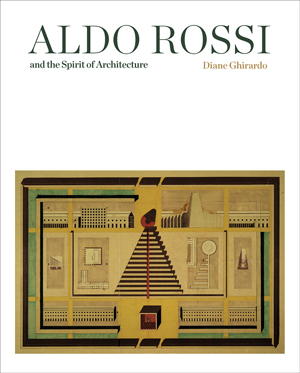
Aldo Rossi and the Spirit of Architecture
By Diane Y. F. Ghirardo
London: Yale University Press
254 mm x 203 mm
135 color + 5 b/w illustrations
280 pages
US$65 / £50.00 GBP (hardback)
ISBN: 978-0300234930
Baukultur at the 18th Venice Biennale: The Davos Alliance Kick-off Meeting
VOLUME 8/2023 - Issue 1 , Pages: 191 - 196 published: 2023-06-30A Modular Approach to Colonia Landscapes in Texas’ Lower Rio Grande Valley
VOLUME 7/2022 - Issue 2 [The Right to Housing], Pages: 553 - 576 published: 2023-01-30The Lower Rio Grande Valley (LRGV) is a transborder region that lies in the floodplain of the Rio Grande/Río Bravo River. The region, which covers four Texas counties and the northern portion of the Mexican State of Tamaulipas, is home to more than 900 colonias on the Texas side of the border. These informal, unincorporated settlements–which house more than 400,000 people–are characterized by substandard housing and a lack of civil infrastructure including sewers, paved roads, and potable water. Many of the colonias flood regularly. This proposal imagines a modular, transitional approach to designing housing and landscape in LRGV colonias. While typical modular housing projects are standardized, prefabricated, packed, shipped, and assembled onsite; the following proposal extends modular efficiencies to the entire site, incorporating landscape, flood control, and canal systems. The holistic, modular approach allows for the flexible growth and decline of the community over the course of one hundred years. Ultimately, the transitional, modular model challenges the adversarial environmental, social, and economic arrangements that exist in colonia developments, imagining a more sympathetic relationship between people, water, and land.



